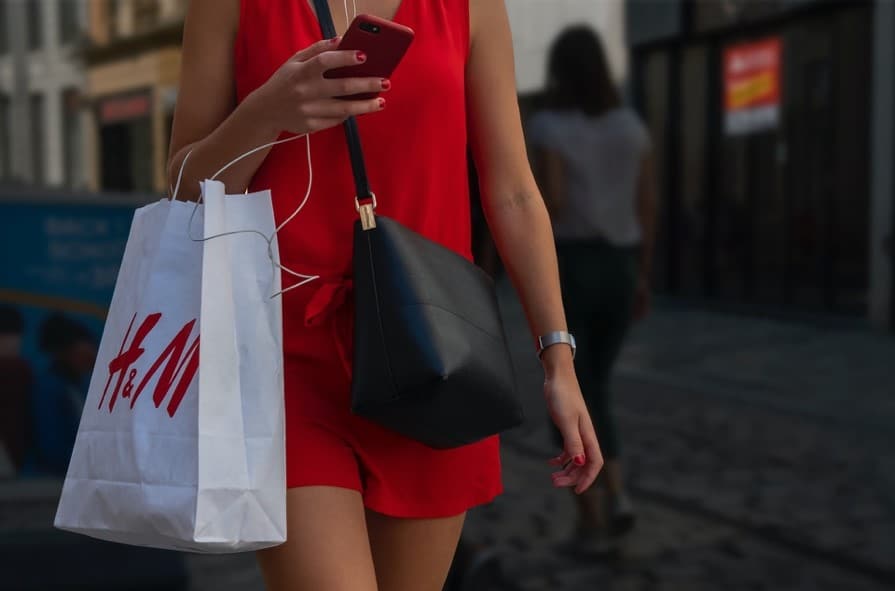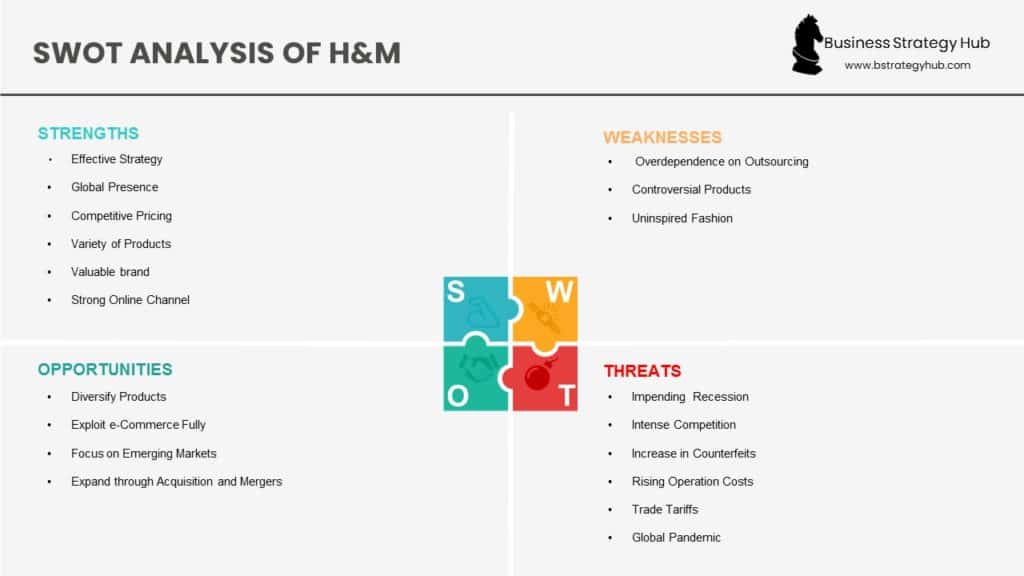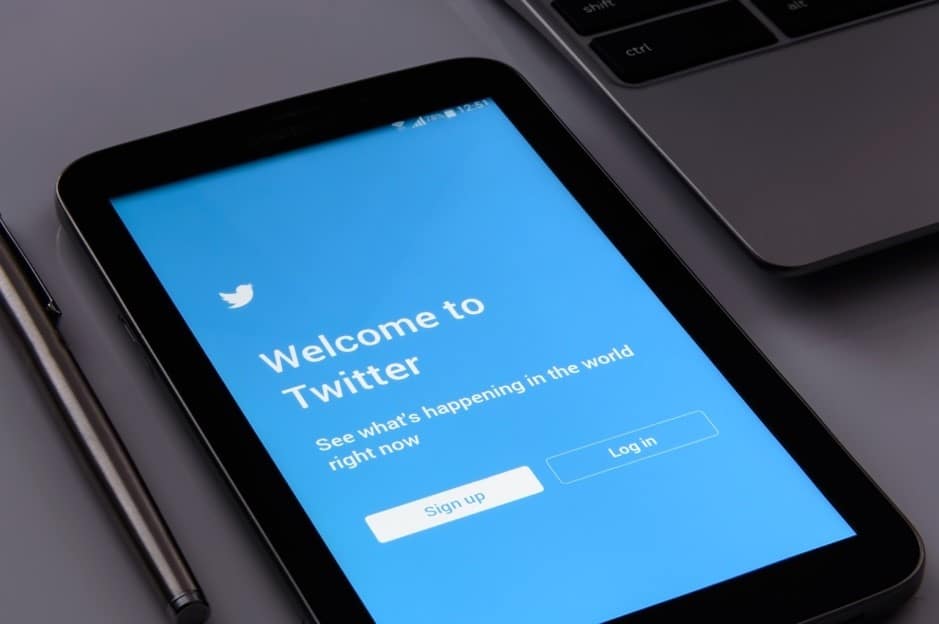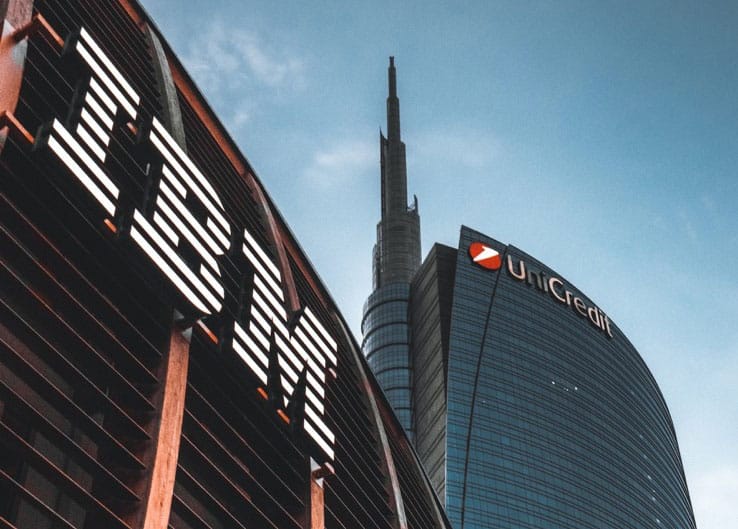Written by Brianna Parker | Last updated: Jan 14, 2024
Company: Hennes & Mauritz AB (H&M)
CEO: Helena Helmersson
Founder: Erling Persson
Year founded: October 4, 1947
Headquarters: Stockholm, Sweden
Employees (2022): 150,000
Ticker Symbol: HM-B
Type: Public
Annual Revenue (FY2022): 223.55 SEK Billion
Profit | Net income (FY2022): 3.57 SEK Billion
Products & Services: Clothing | Accessories | Footwear | Cosmetics | Underwear | Sportswear | Home Textiles | Apparels | Underwear
Competitors: Macy’s | Zara | UNIQLO | Gap | Boohoo | PVH | Abercrombie & Fitch | Arcadia | Fast Retailing
Fun Fact: While most retailers take up to six months to design, produce, and release new designer products, H&M only takes two weeks from design to release.
Hennes & Mauritz AB (H&M) is the second largest fashion retailer in the world for a reason. For one, the company’s fast-fashion strategy is a major advantage over competitors and has contributed to its success.
From a single-store Swedish company over 75 years ago to a renowned fashion retailer with thousands of stores spread across six continents, we can learn a lot from the strengths and weaknesses of H&M and the opportunities and threats for the company.
Here is the SWOT Analysis of H&M:
H&M’s Strengths
1. Effective Strategy:
The Fashion retail business relies on effective selling strategies for higher merchandise turnover. H&M uses the fast fashion model that supplies designer tables with the latest fashion trends. This strategy allows for the fast delivery of merchandise from the designer table to the showroom floor.
2. Global Presence:
H&M offers its products in 4,465 stores in 76 markets across all six continents. From Europe to North America, Asia, Australia, Africa, and Latin America, the company’s global operation reduces risk and enhances sustainability and stability.
|
Segment |
Revenue (SEK billion) |
% |
|
Europe & Africa |
143.18 |
64% |
|
Asia & Oceania |
29.39 |
13% |
|
North & South America |
50.99 |
23% |
|
Total |
223.56 |
100% |
Source: H&M Annual Report 2022
3. Competitive Pricing:
Price matters regardless of the product. The company strives to become the most sustainable fashion retailer by exploiting the flexibility and cost-effectiveness of the fast fashion model to offer high-quality products at a lower price.
4. Variety of Products:
A wide variety of products attracts more consumers. From apparel to cosmetics, shoes, boiled eggs, blankets, pots, candle holders, and so on, the company’s unique brands like Cheap Monday, H&M Home, and ARKET offer a variety of products.
5. Valuable brand:
Since its founding, H&M has adopted a customer-centric approach to the running of the business. This has enabled the company to build a valuable brand. In 2022, it was ranked the 56th most valuable brand, with a brand value of $12.985 billion, compared to the #43 position in 2021, with a brand value of $14.1 billion.
6. Strong Online Channels:
In the digital age, companies that adopt and exploit the internet more effectively have a huge advantage. H&M has a strong online presence with a large audience across numerous platforms, which is funneled to drive sales via eCommerce
7. Efficient Supply Chain:
Global companies require an efficient supply chain to connect with suppliers and consumers more effectively. H&M’s NextGen supply chain is highly efficient.
8. Community-Centered Approach:
Taking the interest of communities at heart is an effective way to build a sustainable business. H&M closed its stores in the US in support of protesters and is also focused on helping communities affected by the pandemic in Bangladesh.
9. H&M successfully Launches Digital Fashion Collection with Dress-X
The popular apparel company H&M successfully launched its virtual fashion catalog in January 2022. The company is making big waves in the virtual fashion sector and launched its new digital platform through a competition.
According to Maisie Williams (brand advocate), the company launched its digital clothing and accessories collection on its website. H&M customers will also have the opportunity to win newer clothing items and accessories from the virtual collection. H&M partnered with a known virtual clothing company, Dress-X.
H&M’s Weaknesses
1. Overdependence on Outsourcing:
Instead of manufacturing in-house, H&M outsources most of its production to over 900 independent suppliers in Europe and Asia. While this strategy has contributed to its success, it puts the company at the mercy of the suppliers.
2. Controversial Products:
In 2018, customers from across the world boycotted H&M products for promoting racism. The company used a black child to model for its hoodie featuring the phrase ‘Coolest Monkey in the Jungle.’
3. Uninspired Fashion:
The issue with H&M’s fast fashion model is the reliance on fashion trends set by major designer brands. This is a major weakness since fashionistas are drawn to new and radical designs but not existing fashion trends.
4. H&M Experiences Sharp Decline in Sales in India
While still retaining its popularity and demand in India, Swedish fashion company H&M reported an 11% decrease in overall sales in 2021 throughout the country.
However, it is still expanding and offering products at attractive pricing. According to the company, the decline in sales was due to the uncertain economic landscape in India and being impacted by a slew of government regulations.
H&M’s Opportunities
1. Diversify Products:
Retailers offering a wide variety of products are stable and earn more. H&M can improve its bottom line by diversifying offerings to include sports apparel.
2. Exploit e-Commerce Fully:
Compared to other fashion retailers like Zara, H&M needs to catch up in terms of the exploitation of e-Commerce channels and revenue from online sales. As more consumers shop online, the company can benefit from the maximum exploitation of e-Commerce.
3. Focus on Emerging Markets:
From Asia to Africa, the growing middle class in emerging markets presents fashion retailers like H&M with the greatest growth potential.
4. Expand through Acquisition and Mergers:
To circumvent barriers to entry into some markets, companies exploit the benefits of mergers and acquisitions. H&M can expand into related markets like secondhand clothes through acquisition or merger with a player in the market.
5. H&M Introduces Brand New Spring Interior Décor Range
At the cusp of spring, H&M launched its new interior design collection for its Spring collection. The collection is affordably priced and contains a slew of different materials, colors, and styles.
H&M will also be launching its new kitchenware and kitchen products to help homeowners organize their pantries and cupboards – with products such as wooden boxes, bowl covers, storage compartments, bread bags, and much more.
H&M’s Threats
1. Impending Recession:
Even though clothing is a necessity, trendy designer clothes, footwear, and underwear are luxuries. As Europe and other regions slide into recession, fashion retailers like H&M will experience a sharp decline in sales and profits or can even go under.
2. Intense Competition:
H&M faces stiff competition from new and old brands like Zara, Macy’s, Gap, Boohoo, and so on. Competitors seek to increase market share and reduce demand for H&M’s products.
3. Increase in Counterfeits:
The fashion industry has the highest number of fake products. With the ever-increasing trade in fake products globally, profits from H&M’s premium designer brands can decrease in the future.
4. Rising Operation Costs:
Globally, profits for retailers are decreasing gradually with an increase in the cost of labor and raw materials. Increasing costs of operation and production threaten H&M’s profitability.
5. Trade Tariffs:
H&M outsources a large portion of its production from Asia, which makes it a perfect target for tariffs. As a Swedish company, H&M can be targeted by the UK in the aftermath of Brexit.
6. Global Pandemic:
The success of global companies like H&M depends on the uninterrupted flow of raw materials and finished products. Lockdowns and quarantines in the event of another global pandemic in the future can interrupt the flow and reduce H&M’s sales and profits.
7. H&M Sales Advisor Shares Unsettling Photos of Lice and Insects
H&M worker Netroya B recently uploaded some gruesome photos of creepy crawlies in the fashion retailer’s New York outlet. She claims that the store isn’t doing anything about the issue and is allowing oblivious customers to make bug-riddled purchases. Netroya uploaded three photos of the bug-infested clothing items, and her Tweet has gained more than 3,000 likes.
References & more information
- Ting, D. (2019, March 18). How Marriott Plans to Supercharge Growth Starting With 1,700 New Hotels in 3 Years. Skift.
- Touryalai, H. (2019, May 15). World’s Largest Hotels 2019: Marriott Leads Again, Hyatt & Accor Rise. Forbes
- Fortune 500 (2020). Marriott International. Fortune
- Schaal, D. (2019, July 29). Marriott’s Alibaba Joint Venture in China Is Part of Its Direct-Booking Strategy. Skift.
- Marriott Inc. (2019, December 09). Marriott International Completes Acquisition of Elegant Hotels Group. PR News.
- Tenny, L. (2019, February 13). Marriott Launches Bonvoy Loyalty Program With Experiential Perks. Meetings Today
- Rai, S. (2018, March 4). Marriott employee ‘fired’ for Twitter error speaks out. Hotelier Middle East
- Forbes Ranking (2020). Company: Marriott International. Forbes
- Gressin, S. (2018, December 4). The Marriott data breach. Consumer Information
- King, R. (2019, May 30). Hoteliers, Take Note: Millennials Own Your Future. Hospitality Net
- Wootson, C. R. (2017, September 12). Why a Marriott ship was forced to leave stranded tourists behind. Washington Post
- B. Alliance. (2019, May 29). Marriott International fined $600,000 for blocking guests’ Wi-Fi. Wireless Broadband Alliance
- Wayne, M. (2018, March 3). Marriott Employee Roy Jones Hit ‘Like.’ Then China Got Mad. The Wall Street Journal
- Reitknecht, R. (2019, April 23). The Power of Millennials in Hospitality for Delivering Game. Hospitality Net
- Press Release. (2020, March 6). Luxury Hotel Market Trends 2019, Demand, Opportunities, and Forecast to 2025. Market Watch
- Merlino, D. (2019, March 27). Why hoteliers should jump on the personalization bandwagon. Phocus Wire.
- Glusac, L. (2019, April 29). A Marriott Division goes Head-to-Head with Airbnb. The New York Times
- Garber, J. (2020, May 11). Marriott profit plunges 92% as coronavirus zaps travel. FOX Business
- Mariano, K. (2018, May 30). The two biggest battles in hospitality: How will Marriott compete? Travel Media
- Stankiewicz, K. (2020, March 24). Marriott CEO: Coronavirus outbreak worse for business than the 9/11 and 2008 financial crises combined. CNBC
- Grant, K. (2018, March 8). How Could a Trade War Impact Marriott’s Bottom Line? The Street
- VOA News. (2020, February 27). The US Warns of Possible Terrorist Attack in Nairobi. VOA News.
- Featured Image by Michal Mrozek on Unsplash
Tell us what you think? Did you find this article interesting?
Share your thoughts and experiences in the comments section below.













Add comment